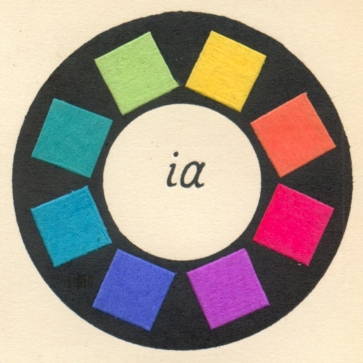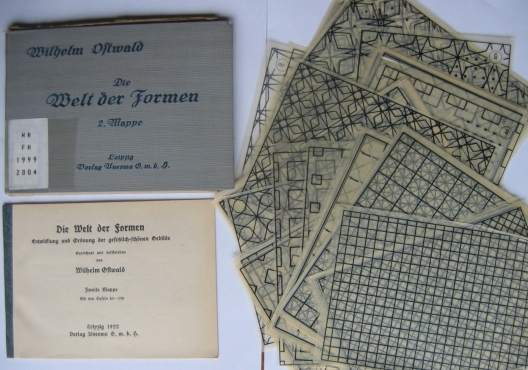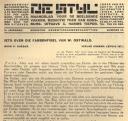March 10th, 2008 by thapke
In 1914 Ostwald was asked by the German Werkbund to prepare a “rational” atlas of colors (see Figure 2). His ideas to create art from a scientific viewpoint were com-bated by most contemporary artists.

His imperative “order = legality = harmony” and his color theory had influence on the German Werkbund, the Bauhaus and the Dutch artistic movement De Stijl.
March 10th, 2008 by thapke
In connection with his color theory Ostwald was also engaged in the “harmony of forms”. Using the rules he developed Ostwald created ornaments and new forms “according the laws of combinatorics” which were “all beautiful, without any exception”!

- Wilhelm Ostwald, Die Welt der Formen : Entwicklung und Ordnung der gesetzlich schönen Gebilde (Leipzig 1922).
- Wilhelm Ostwald, ‘Warum sind Kristalle schön?’, Hamburger Fremdenblatt 94 (1922) No. 150
January 6th, 2008 by thapke
In the first volume of the journal De Stijl a review on Ostwald’s colour theory was published. Two years later De Stijl published Ostwalds paper on the “Harmony of colors”, whose German edition had been published in the journal “Innendekoration”.

De Stijl. Edited by Theo van Doesburg. Leiden, 1917-1932. 8 volumes (90 numbers).
- Wilhelm Ostwald, ‘Die Harmonie der Farben’, De Stijl 3 (1920) 7, 60-62


